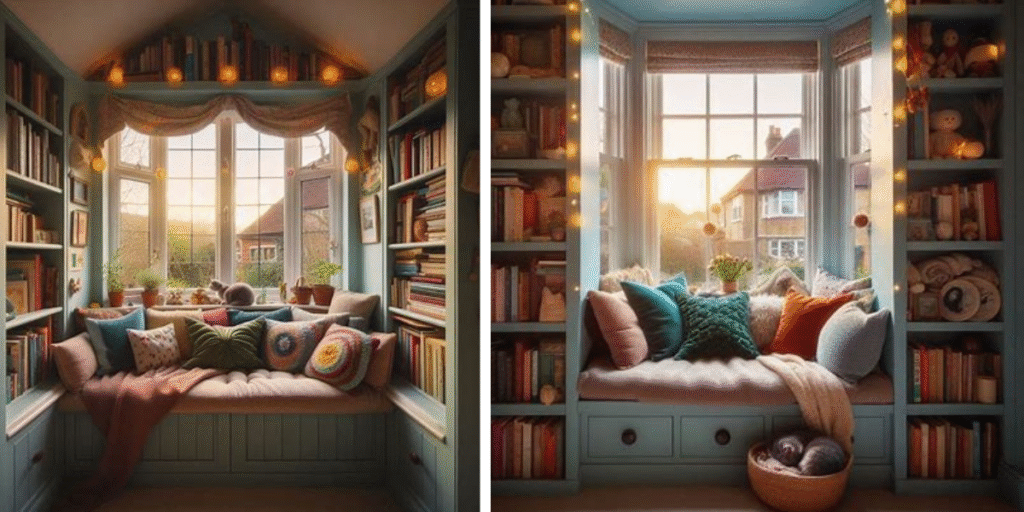Have you ever stepped inside your home and felt instantly tired, even if you were fine moments before?
It happens more often than we admit. The truth is, our spaces hold energy, and when that energy isn’t aligned with who we are, it quietly drains us every single day.
Welcome to the deep connection between emotion, design, and the psychology of home environment, a quietly powerful force that shapes our moods without us even noticing.
When your home becomes heavy, dull, or overstimulating, it starts stealing from your inner peace. But you can change that by creating a mood-boosting home setup, one that heals, restores, and fills your heart with calm.
How Your Home Shapes Your Energy
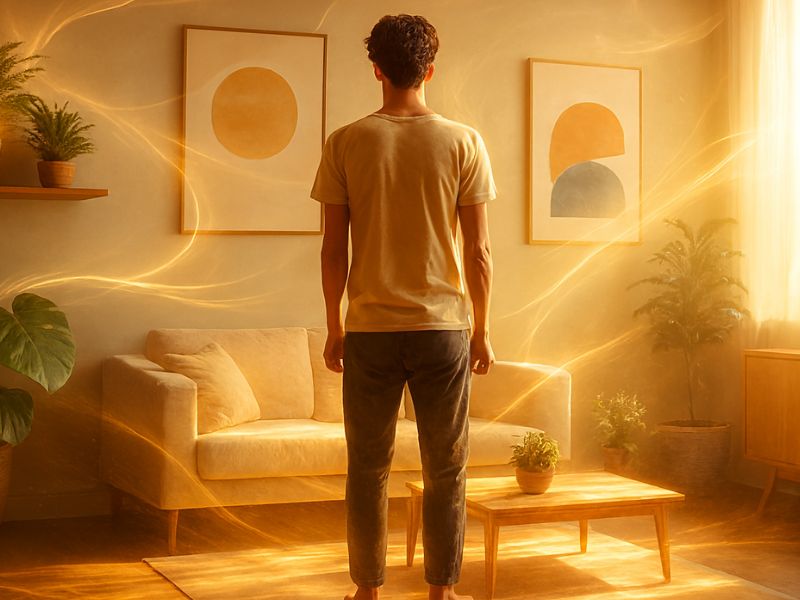
Think about how certain places make you feel. A cozy café can lift your spirit, while a cluttered room can make your chest tighten. That’s the psychology of home environment in action.
Our brains constantly pick up subtle cues, colors, lighting, smells, even sound patterns. These sensory experiences tell your nervous system whether it’s safe, loved, or overwhelmed.
When your home feels off, your body stays alert, like it’s in survival mode.
A mood-boosting home setup interrupts that pattern by offering comfort cues instead, light, flow, and emotional warmth that regulates your stress.
Clearing Clutter, Clearing Energy
Clutter isn’t harmless. It’s a form of visual noise your brain never stops noticing.
Every pile of clothes or table full of items keeps whispering “unfinished business.”
Research in the shows that clutter increases cortisol, the primary stress hormone. When you declutter, you actually calm your own biology.
Try starting small: clear one drawer, one surface. Notice how you instantly breathe easier.
A mood-boosting home setup begins with space, literal space, to think, move, and exist without the weight of “too much.”
Light as Emotional Nutrition
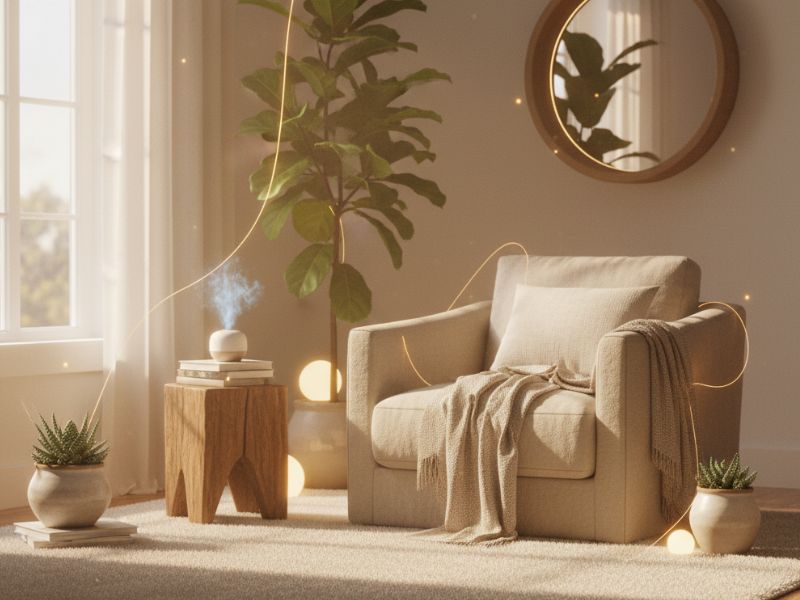
Light is magic for mood. It doesn’t just illuminate the room, it can shift your inner world.
Natural daylight boosts serotonin, your happiness hormone. Harsh, artificial white light can exhaust your eyes and spirit, while warm lighting softly relaxes your mind.
Using the psychology of home environment, think of light as emotional nourishment.
- Keep curtains open to invite morning energy.
- Add soft lamps at eye level rather than harsh overhead bulbs.
- Let twilight feel like a gentle transition rather than a flick of a switch.
A mood-boosting home setup follows nature’s rhythm, bright mornings, golden evenings, restful nights.
Colors That Speak to the Soul
Color psychology matters deeply. Every shade vibrates with emotion.
Soft blues calm anxiety. Sunny yellows awaken joy. Earthy greens and browns remind you of balance and belonging.
If the psychology of home environment had a manifesto, it would say: “Your walls should speak your emotional language.“
If you need grounding, surround yourself with nature-inspired tones.
If you crave excitement, sprinkle bold colors in accents like cushions, art, or rugs.
If life feels chaotic, neutrals restore mental order.
Even small doses of color alignment can build a mood-boosting home setup that whispers peace each time you walk in.
Sound: The Unseen Sculptor of Emotion
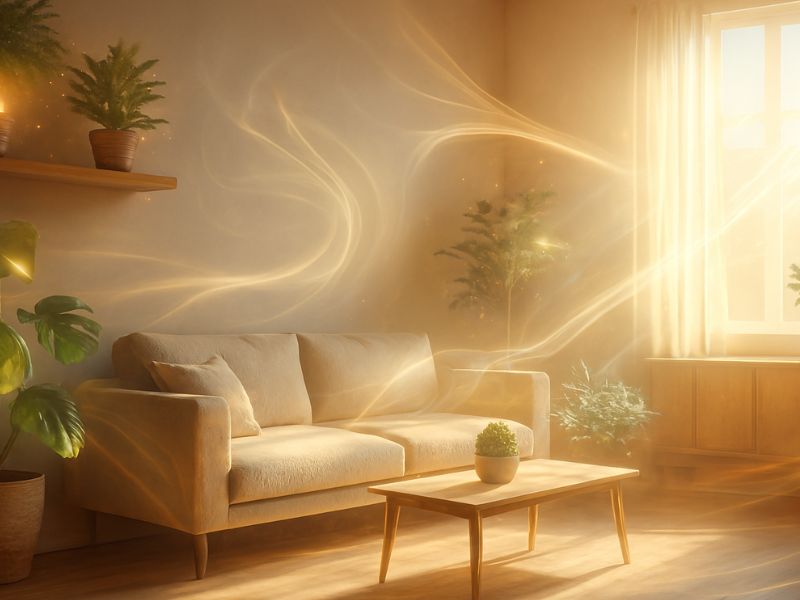
Noise pollution is invisible but powerful.
Dripping faucets, phone alerts, echoing rooms, they all add to emotional fatigue.
Sound is foundational. You can shift entire moods through subtle auditory changes:
Play soft background music while cooking, use gentle white noise while sleeping, or let nature sounds fill the silence.
Use sound intentionally and you’ll notice how your energy softens. The right sound design completes a mood-boosting home setup that supports rather than drains you.
The Silent Weight of “Should”
Many homes feel emotionally empty because they reflect social trends instead of personal truths.
We chase aesthetics, not alignment. We decorate for approval, not comfort.
Your home should mirror your inner self, not your Instagram feed. Ask yourself: if no one ever visited, would you still have designed it this way?
That question brings honesty, and emotional freedom.
A mood-boosting home setup builds from that authenticity by expressing who you are, not who you’re supposed to be.
Personal Anchors: Designing with Emotion
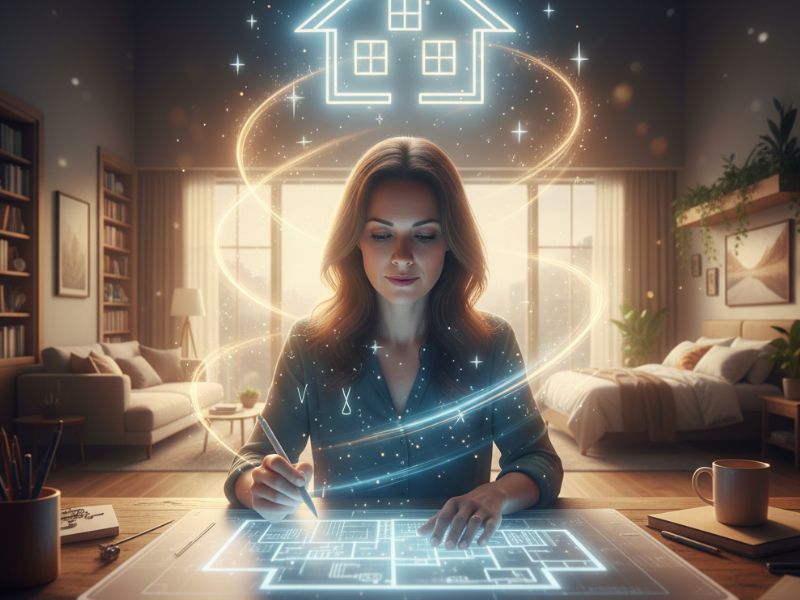
Objects carry stories. A framed photo, a ceramic cup, a book that changed your life, each item holds warmth.
The emotional science behind the home environment reminds us that memory-based décor strengthens grounding. It gives your space emotional gravity.
Choose meaningful over material.
Place your grandmother’s trinket box on your desk if it brings comfort. Display your child’s art proudly. Scatter gentle reminders of love and resilience.
A mood-boosting home setup blends memory with presence, reminding you daily that you are surrounded, supported, and safe.
A True Story: Redesigning a Lost Mind
A year ago, I couldn’t explain my exhaustion.
I slept fine. Ate fine. But home felt heavy. I thought I needed a vacation. I actually needed harmony.
My living room was overstuffed. The paint had grown dull. I kept blinds closed, using screens as light.
One day, I opened the windows, painted the wall in soft green, and added a single indoor plant. That tiny shift changed everything.
Within weeks, my mood lightened. My focus sharpened. Home felt like therapy I didn’t have to schedule.
That’s when I realized the quiet power behind the home environment, how it can either deplete or heal without a word spoken. I now curate a mood-boosting home setup that actively fuels my peace.
The Healing Power of Plants
Plants are nature’s antidepressants.
They clean the air, steady the mind, and add organic warmth that machines can’t mimic.
Place a small indoor plant where you spend most of your time. As it grows, your patience grows with it. Caring for it becomes a grounding ritual, connecting you to life’s slow rhythm.
A plant completes a mood-boosting home setup by teaching stillness and resilience.
Scents That Shift Emotion
Scent is the doorway to memory. It bypasses language and goes straight to feeling.
A drop of lavender can soften stress. Citrus can energize. Vanilla comforts the heart.
Psychology links fragrance to emotional balance and focus.
Lighting a candle, diffusing essential oils, or baking something fragrant can instantly elevate your state of mind.
Create a scent ritual, a daily way of reminding your nervous system: “You’re safe here.” That alone transforms your home into a mood-boosting home setup.
Energy Flow and Movement

Spaces hold rhythm. When furniture blocks pathways or corners feel stagnant, your body senses tension.
That’s why feng shui concepts overlap naturally with the home environment.
Keep pathways open. Allow light and air to move freely.
Position furniture for easy connection, so conversation flows, light reflects, and your eyes rest gently.
When rooms breathe, you breathe. And a breathing home becomes a mood-boosting home setup by accident, simply because energy moves.
MUST READ: Dopamine Decor
Sleep and Morning Energy
Your bedroom should be a sanctuary for repair.
No clutter on the floor. No harsh light above. No reminders of work looming on the desk.
Let it whisper “rest” visually and energetically.
At dawn, let morning light wake you gradually. Stretch, open the windows, greet your surroundings. Gratitude transforms even small routines into spiritual nourishment.
Restoration is less about luxury and more about mindful simplicity.
Building Your Own Mood-Boosting Sanctuary
Here’s how to start small but meaningfully:
- Declutter one visible surface every week.
- Bring in more natural light.
- Choose two colors that nurture your current state.
- Play calming background music during stressful hours.
- Use scent to mark transitions—work to rest, day to night.
- Keep one “peace corner” only for journaling, meditation, or quiet thought.
- Add textures like organic cotton, wood, and soft rugs for sensory safety.
Listening to What Your Home Says

Your walls tell stories. They echo your emotional habits. A cluttered space might signal confusion. Sparse emptiness could reveal unexpressed sadness. Changing your home isn’t vanity, it’s therapy. As your surroundings soften, your mind follows. That’s the silent agreement between your emotions and your home environment.
When you begin treating your surroundings as extensions of your emotional life, your space becomes a living reflection of healing. And that’s the promise of a true mood-boosting home setup.
FAQs
1. What exactly does home psychology mean?
It’s the study of how physical spaces impact mood, focus, and emotional health. The psychology of home environment explores this relationship deeply.
2. Can I really heal mentally through decor changes?
Yes. Small environmental changes trigger calm and clarity. A mood-boosting home setup supports emotional balance daily.
3. I rent my home, what can I do cheaply?
Play with lighting, fabrics, scents, and sound. Most of the psychology of home environment is sensory, not structural.
4. How often should I refresh my space?
Every few months. As your mindset evolves, your environment should adapt to reflect it.
5. Does minimalism guarantee emotional peace?
Not always. Peace comes from personalization, not rigidity. A mood-boosting home setup honors what comforts you, not trends.
Final Reflection
Home is more than architecture. It’s emotional weather, changing with our moods, reflecting our inner world, holding our daily hopes. When you approach design from the lens of the psychology you realize: everything around you is either restoring or draining you.
A true mood-boosting home setup isn’t about expensive furniture or following rules. It’s about alignment, between you and the space that holds you. Start small. Move slowly. Listen deeply.
When your home begins to match your peace, you won’t just live there, you’ll heal there.

